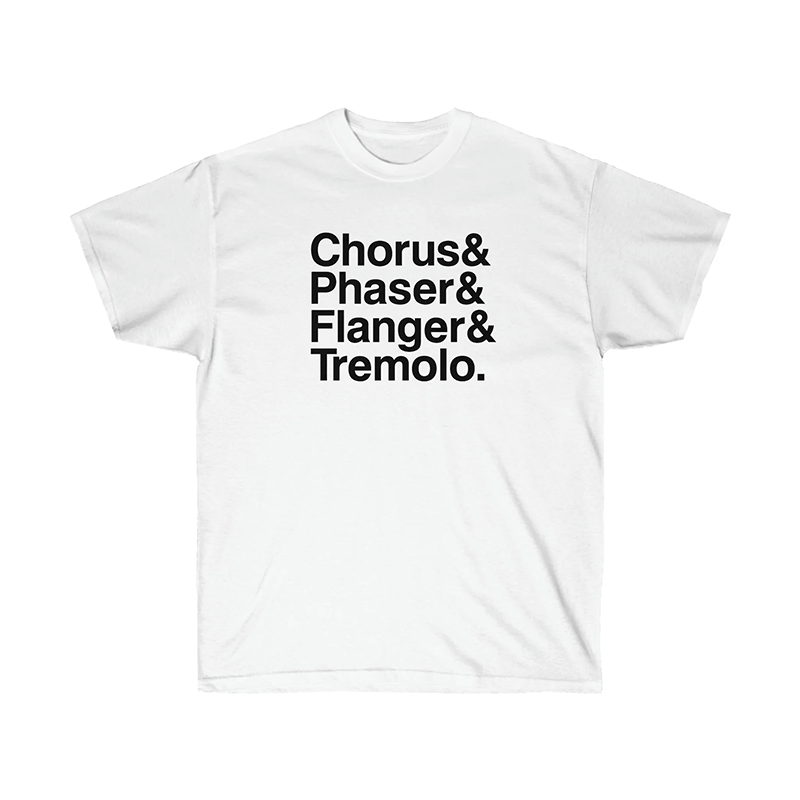 How does one company manage to craft not ONE, not even TWO, but THREE of the most-used and highly regarded delay pedals in existence? Starting from scratch and perfecting Version One, that’s how. Although the Memory Lane 2 might be generally regarded as a better machine, and the Memory Lane Jr. might appear on more pedalboards throughout the world, it all started with today’s featured pedal, the Memory Lane Analog Delay from our friends at Diamond Pedals.
How does one company manage to craft not ONE, not even TWO, but THREE of the most-used and highly regarded delay pedals in existence? Starting from scratch and perfecting Version One, that’s how. Although the Memory Lane 2 might be generally regarded as a better machine, and the Memory Lane Jr. might appear on more pedalboards throughout the world, it all started with today’s featured pedal, the Memory Lane Analog Delay from our friends at Diamond Pedals.
Although fairly large in size, the Memory Lane’s controls aren’t too difficult to figure out, as they made the knobs nice and big, as well as positioned them far enough away from the footswitches that you most likely won’t have any overlap (unless you’re Shaquille O’Neal, maybe). Delay starts us off, allowing you to adjust the overall time of the delays, from 40ms up to 550ms. You can also control this function via the right side footswitch below (when the center toggle switch is in Tap mode). Up next is what Diamond calls the “Feedback” section: EQ and Level. The EQ adjusts to give a darker, classic delay tone, or lets you brighten up your repeats with a turn of the knob. Level controls the Feedback level here, with a starting point of just one lone echo, all the way up to vintage oscillation territory, especially when mixed with a bit brighter signal from the EQ control.
The Modulation section is really where the Memory Lane shines, introducing an incredible-sounding warble, reminiscent of an old tape echo, into the delayed effect. The Depth control adjusts the actual amount of modulation you want present in your delay, with longer delay Time settings producing deeper modulation effects. Speed then controls how slow or fast the modulation is moving, from about 0.1 Hz to 10 Hz when maxed out, creating a whole array of sounds to play with. The Mix knob blends your guitar’s original signal with the delayed effect to taste, making it easy for you to have as much or as little delay as you want.
Back to that toggle switch from earlier – there’s another mode you can use in conjunction with the right side footswitch: Mod. When this mode is selected, the footswitch now acts as an On/Off for the Modulation section of the Memory Lane, letting you add in or take out the warble as you see fit. When this is activated, your delay time can only be controlled manually using the Delay knob, but it makes for some fun stutter-step echo influxes and experimental sounds in an instant. There’s also the ability to control the Feedback with an external expression pedal via a 1/4″ TRS jack in the back, and with Mix/Direct and Delay Only outputs, you can run different amp setups and combinations to your heart’s content.
With a warm, classic analog delay sound via 2 NOS MN3005 chips (running at 15V), the original Memory Lane is as good-sounding and user-friendly as you’re going to find for pedals in this price range, and a lot that cost more as well. It’s pretty much the pedal that made everyone have to have Tap Tempo, Analog Sound and Modulation in their delays, and this one does all of those things at once, and with ease. I love my Memory Lane Jr., for sure, and I have not yet had the opportunity to test out a Memory Lane 2, but this original is no slouch – if you come across one for s decent price, go ahead and grab it!
Submitted by Mike B, Website
Demo Rock pedalboard by West Coast Pedalboard
GET EXCLUSIVE UPDATES, CONTEST INFO, SEE OUR LATEST DEMO VIDEOS AND MORE:

















